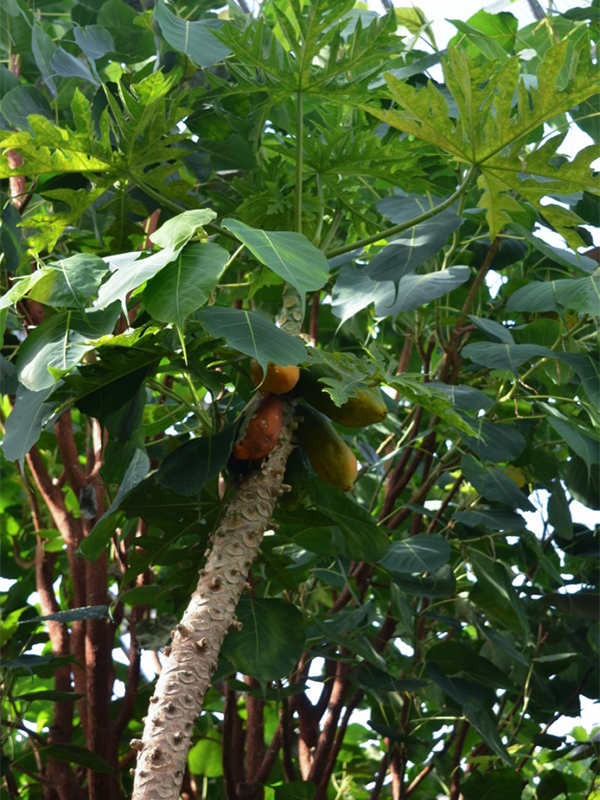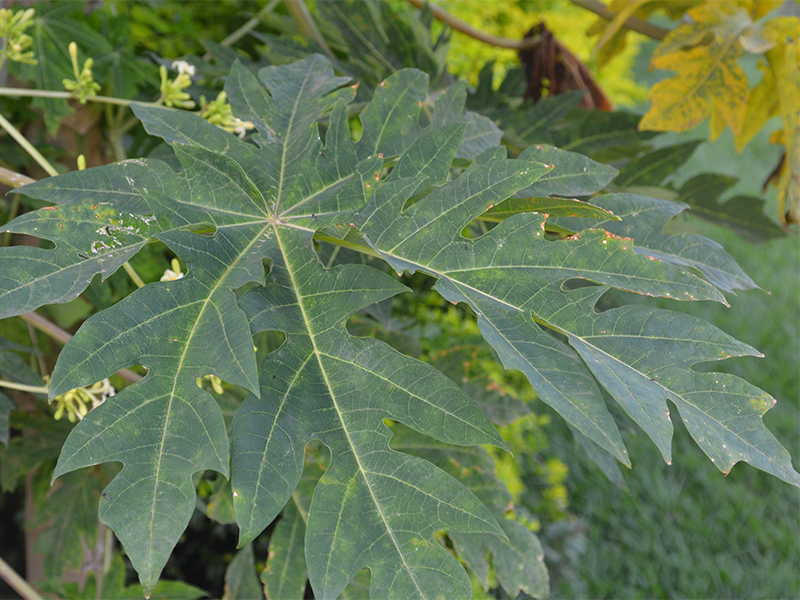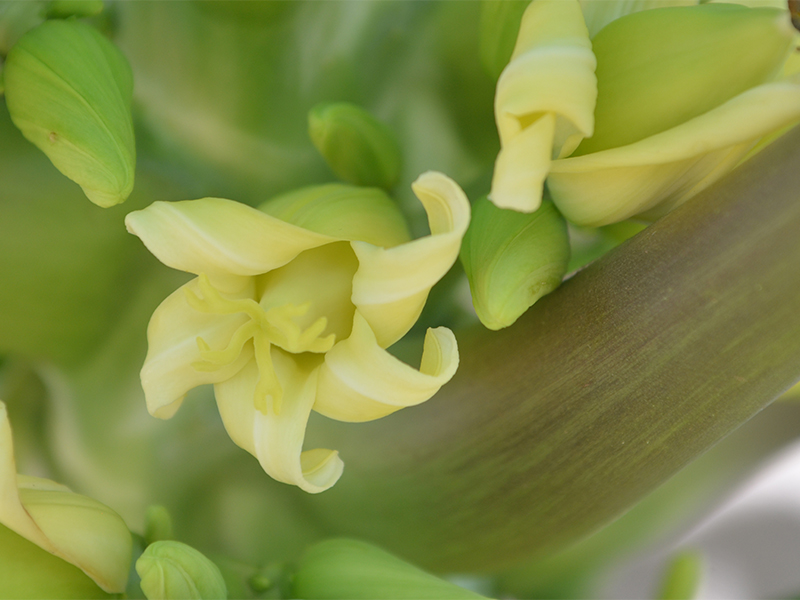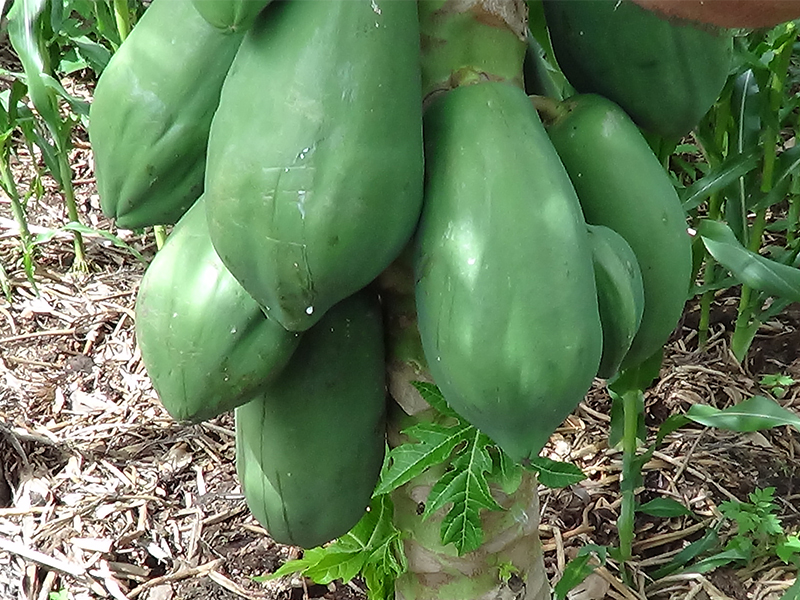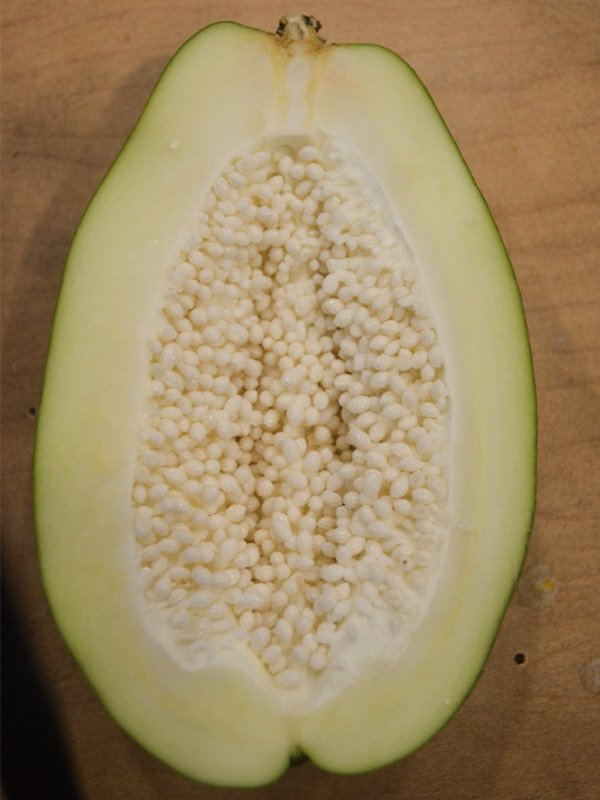
Tropicals > Carica > Carica papaya > Carica papaya
Carica papaya
Papaya
Origin: South America.
Mike's
Opinion


"
A personal favourite of mine for the unripened green fruit which is made into a delicious Thai salad called som tam.
Michael Pascoe, NDP., ODH., CLT., MSc. (Plant Conservation)
"
| Family |
| Caricaceae |
| Genus |
| Carica |
| Species |
| papaya |
| Category |
| Tropicals |
| Type |
| Tree (evergreen) |
| USDA Hardiness Zone |
| 10 - 12 |
| Canadian Hardiness Zone |
| Requires cool season protection under glass. |
| RHS Hardiness Zone |
| H1c - H3 |
| Temperature (°C) |
| -5 - 10 |
| Temperature (°F) |
| 23 - 50 |
| Height |
| 1 - 6 m |
| Spread |
| 1 - 4 m |
Photographs
Description and Growing Information
Flowering Period
| Landscape |
| Planted as a fruit tree, container planting and ornamental use. |
| Cultivation |
| Full sun and partial-shade. Well-drained, rich, humusy and moist soil. Frost intolerant. |
| Shape |
| Upright canopy. |
| Growth |
| Fast |
| Pests |
| Root rot may occur. |
| Habitat |
| Lowlands. |
| Bark/Stem Description |
| Single, unbranched and non-woody trunk. |
| Leaf Description |
| Palmately, 7-lobed leaves on stalks. |
| Flower Description |
| Fragrant, trumpet-shaped flowers. Male racemes are long and females appear in small clusters or solitary. |
| Fruit Description |
| Large, fleshy, melon-like fruit that hang in clusters attached to the top of the trunk under the canopy. |
| Colour Description |
| The flowers are yellowish-white. The leaves are green. The fruit is green and ripens to a yellowish-orange colour with a pinkish-orange inside. |
| Ethnobotanical Uses (Disclaimer) |
| The melon-like fruit are edible both green and ripe, including the seeds which can impart a peppery taste to salads. The fruit are high in vitamin A, C and E as well as potassium and fibre. |
